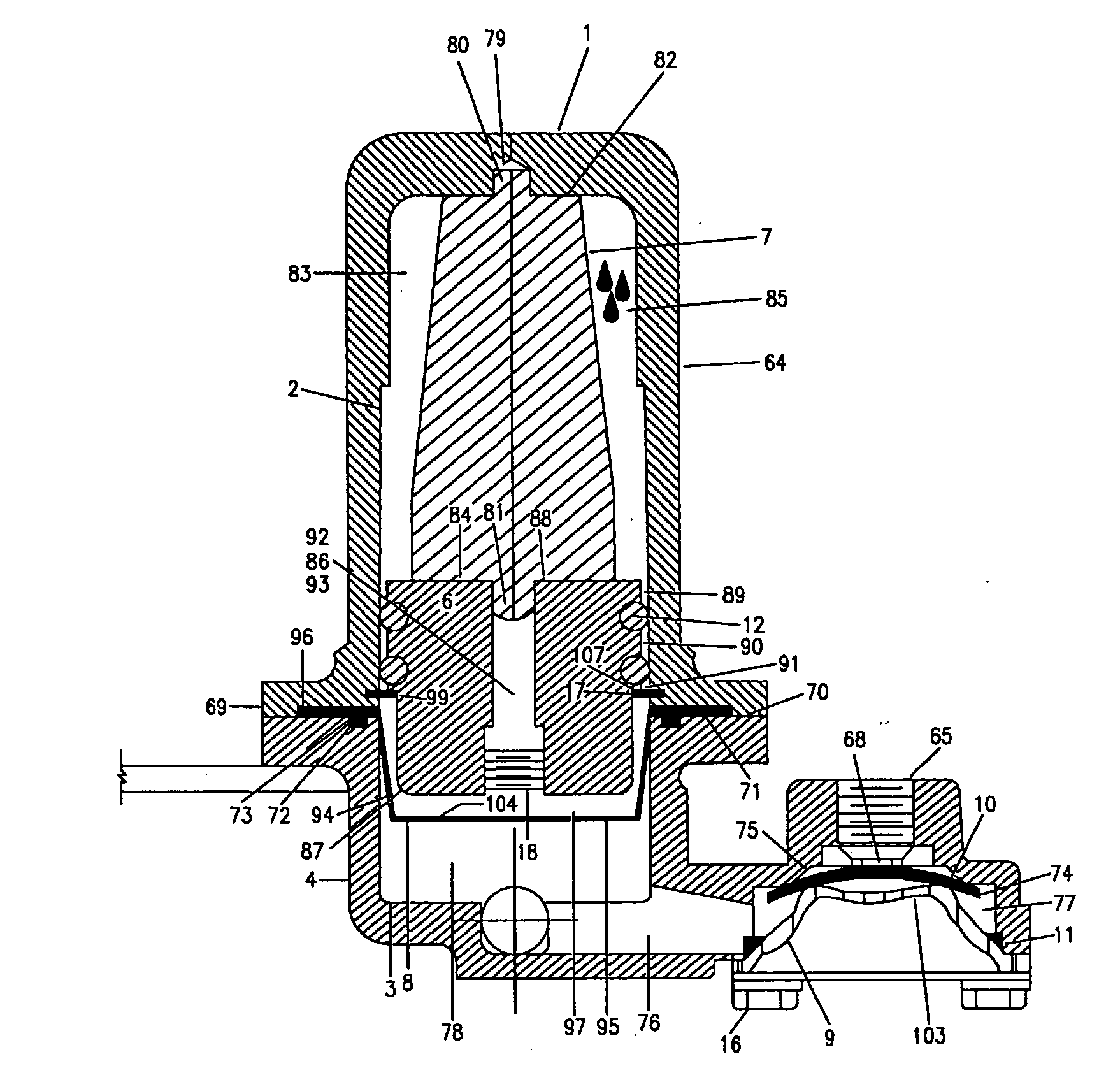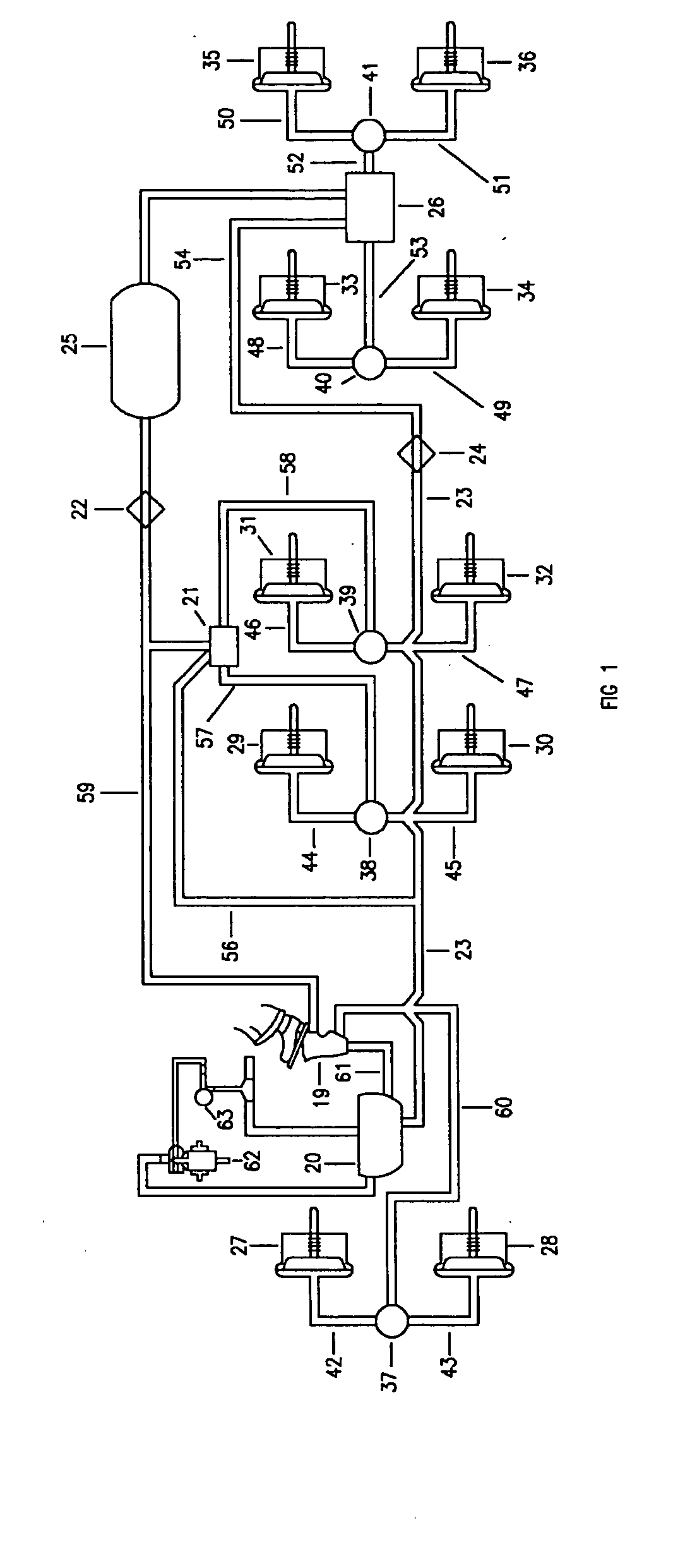Pneumatic closed-looped antilock pressure modulating device for pneumatic brake systems
a closed-looped, anti-locking technology, applied in the direction of brake safety systems, vehicle components, braking systems, etc., can solve the problems of acm not being able to prevent the wheels from locking, acm being subject to contaminants, and malfunctioning,
- Summary
- Abstract
- Description
- Claims
- Application Information
AI Technical Summary
Benefits of technology
Problems solved by technology
Method used
Image
Examples
Embodiment Construction
[0051] Referring more particularly to FIG. 1, the novel differential pressure regulator quick release valves of the present invention are illustrated therein in connection with a pneumatic fluid pressure vehicle braking system. Said braking system includes; a truck reservoir 20 supplied by a conventional compressor 62, a conventional governor 63 employed for controlling the operation of the compressor 62 in accordance with the pressure of the air within the reservoir 20, a reservoir 25 for the trailer, a treadle valve 19, opposing brake actuator chambers 27 and 28 (FIG. 9), 29 and 30, 31 and 32, 33 and 24, 35 and 36, a conventional relay valve 21, an emergency relay valve 26, glad hands 22 and 24 connecting the trailer / truck air brake systems. Also shown in FIG. 1 are the conduits 60, 57, 58, 52 and 53, whose purpose is to direct fluid pressure to the invention 37, 38, 39, 40, and 41 of the patent, and are interposed respectively between opposing brake actuators 27-36, and connected...
PUM
 Login to View More
Login to View More Abstract
Description
Claims
Application Information
 Login to View More
Login to View More - R&D
- Intellectual Property
- Life Sciences
- Materials
- Tech Scout
- Unparalleled Data Quality
- Higher Quality Content
- 60% Fewer Hallucinations
Browse by: Latest US Patents, China's latest patents, Technical Efficacy Thesaurus, Application Domain, Technology Topic, Popular Technical Reports.
© 2025 PatSnap. All rights reserved.Legal|Privacy policy|Modern Slavery Act Transparency Statement|Sitemap|About US| Contact US: help@patsnap.com



